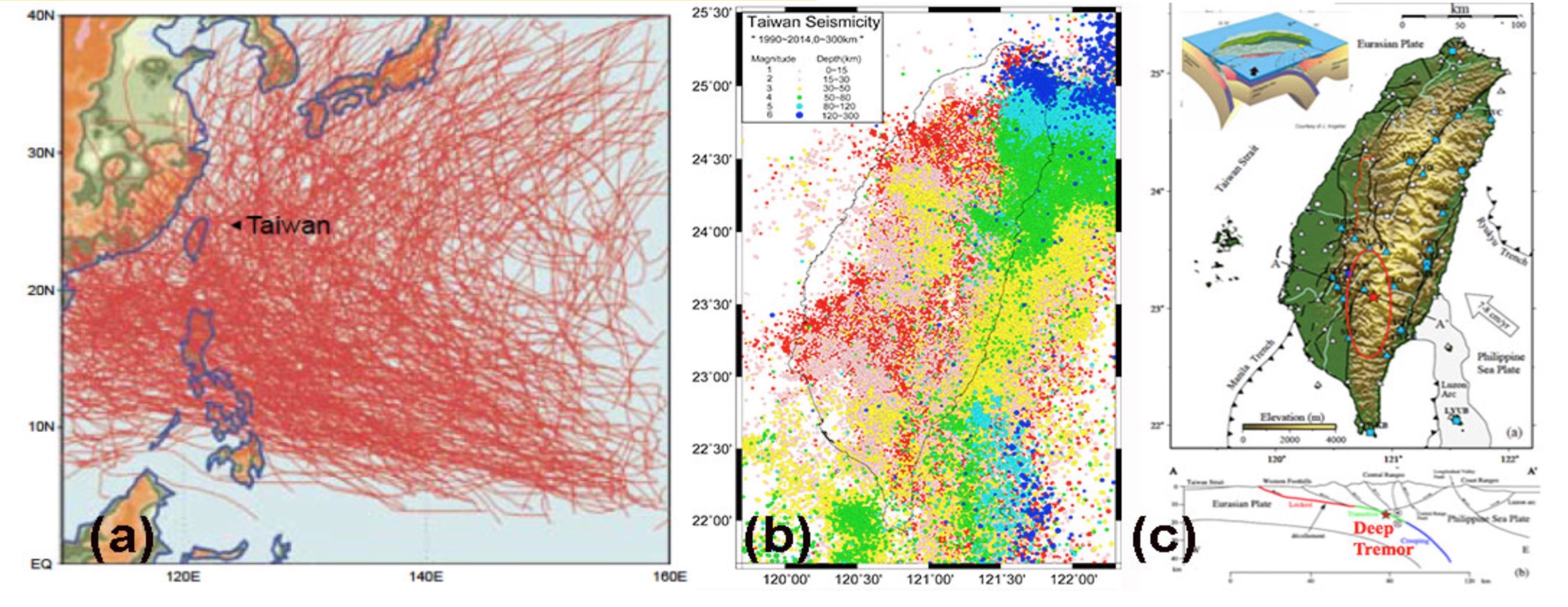Cascading Hazards: Understanding triggering relations between wet tropical cyclones, landslides, and earthquakes
Earthquakes, landslides, and tropical cyclones are extreme hazards that pose significant threats to human life and property. Some of the couplings between these hazards are well known. For example, sudden, widespread landsliding can be triggered by large earthquakes (Keefer, 1984; Huang and Fan, 2013; Li et al., 2014) and by extreme rainfall events like tropical cyclones. Recent studies have also shown that earthquakes can be triggered by erosional unloading over ~100-year timescales in Taiwan, where erosion is dominated by landsliding (Steer et al., 2014). Some studies have proposed some mechanisms connecting triggered seismicity to cyclones. Brooks (1924) suggested that the low atmospheric pressure of an intense typhoon triggered the 1923 M=7.9 Kanto (Japan) Earthquake. Meng et al. (2013) observed a clear increase of aftershock productivity when Hurricane Irene passed through the epicentral region of the 2011 M5.8 Virginia earthquake. In the above cases the suggested triggering is transient, whereby the earthquakes occurred during cyclone passage over the epicentral areas and were triggered by unclamping due to cyclone’s low pressure.
Taiwan is an excellent locality for evaluating relations between earthquakes, landslides, and cyclones, because (1) it is tectonically active and has a high rate of seismicity; (2) it is subject to frequent tropical cyclones (3-4 per year), some of which result in huge amounts of precipitation (> 1000 mm), and (3) there is an excellent scientific record of these phenomena.

|
Figure 1: Taiwan has abundant history of seismicity, landslides and typhoons.(a).Typhoon tracks (1980-2005) in the region around Taiwan. (b).Earthquakes (M>4.5) occurred around Taiwan during the years 1990-2014. (c). Main fault systems governing mountain building processes in Taiwan, and the regions with deep tectonic tremor (Peng and Chao, 2009). The earthquakes and deep tremor studied in the proposed research occurred on the main and secondary fault system in central Taiwan.
Two recent devastating earthquakes, the 1999 M = 7.6 Chi-Chi (Taiwan), 2010 M=6.4 Kaohsiung (Taiwan), and other moderate size earthquakes occurred in tropical mountainous areas shortly after wet tropical cyclones (hurricane or typhoon) hit the same areas. A systematic analysis of main-shock earthquakes and the six wettest typhoons in Taiwan’s past 50 years reveals similar temporal relations between M≥5 events and wet typhoons.
